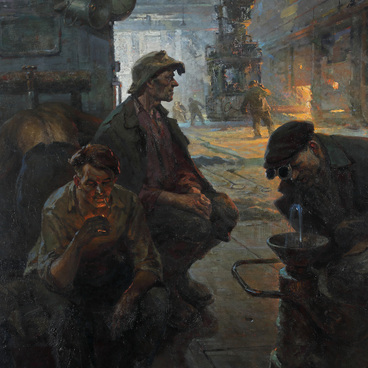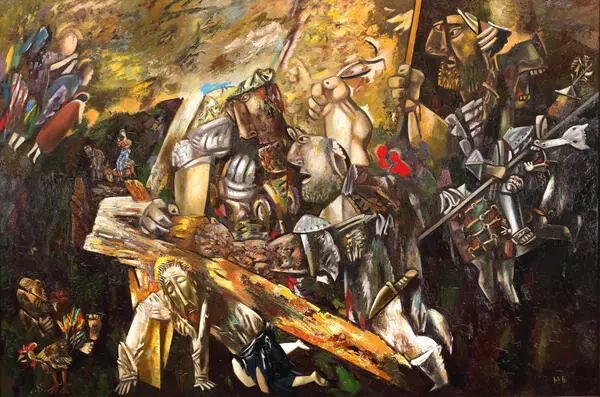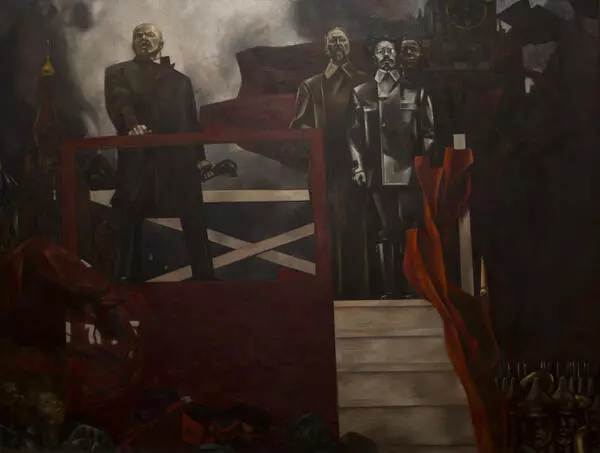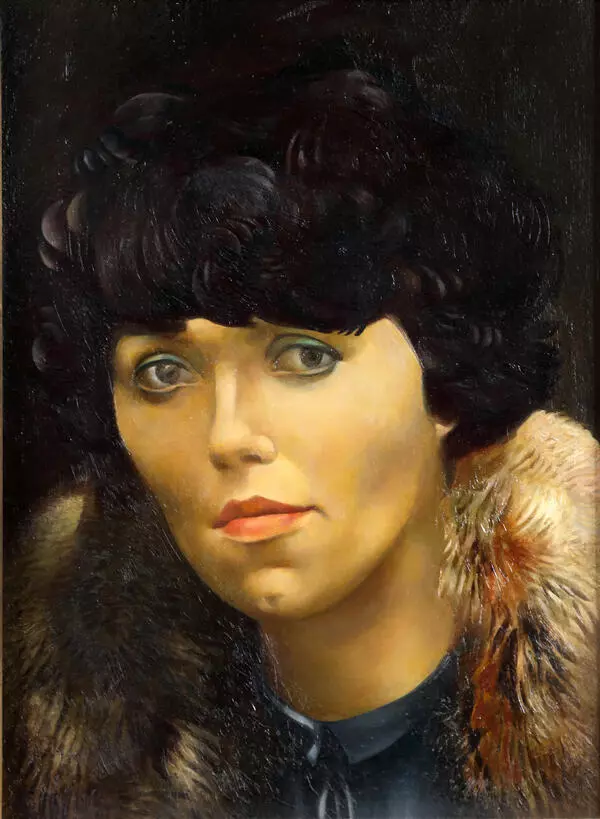The painting “Judas Kiss” by the Ural artist Misha Brusilovsky was created in 2001. It is part of his most significant painting cycle based on biblical motifs. This work is the artist’s reinterpretation of his eponymous painting made in 1999.
“Judas Kiss” is a well-known gospel episode about meanness and betrayal. It is described in the Gospels of Luke, Mark, and Matthew, and it also appears in the Passion of Christ and goes after the Agony in the Garden of Gethsemane. According to biblical legend, Judas Iscariot, a disciple of Christ, betrayed his Teacher to the high priests in exchange for thirty pieces of silver — he was supposed to identify Jesus Christ by kissing him. A kiss was considered a traditional greeting to friends and loved ones among the Jews, which further emphasizes the traitorous nature of the Judas kiss.
This episode was in demand in Orthodox iconography and popular in religious painting. Old European masters often chose the “Judas Kiss” image for their paintings. The tragic plot of betrayal is quite frequently used by modern artists, as did Misha Brusilovsky.
The painter used the visual contrast of light and dark images to express the internal struggle of the main characters, their boundless meekness and treacherous hypocrisy, tragic wisdom and blindness. The center of the composition is arranged in such a way that the contrived embellishment betrays tense dramatic insights.
In addition to the artistic means of expression, Misha Brusilovsky also integrates certain messages into his artwork to tell the gospel story of betrayal in his own way. As is often the case in Brusilovsky’s paintings, this painting does not follow the plot too closely, instead, the artist seeks to give it a new meaning by combining the biblical motif with modern imagery.
This way, both the artist and his contemporaries found themselves involved in the tragic experiences of the gospel characters, going through the eternal struggle of good and evil, loyalty and betrayal. One can recognize famous Ural cultural figures and even Misha Brusilovsky himself among the characters flanking the figures of Christ and Judas in the center.
“Judas Kiss” is a well-known gospel episode about meanness and betrayal. It is described in the Gospels of Luke, Mark, and Matthew, and it also appears in the Passion of Christ and goes after the Agony in the Garden of Gethsemane. According to biblical legend, Judas Iscariot, a disciple of Christ, betrayed his Teacher to the high priests in exchange for thirty pieces of silver — he was supposed to identify Jesus Christ by kissing him. A kiss was considered a traditional greeting to friends and loved ones among the Jews, which further emphasizes the traitorous nature of the Judas kiss.
This episode was in demand in Orthodox iconography and popular in religious painting. Old European masters often chose the “Judas Kiss” image for their paintings. The tragic plot of betrayal is quite frequently used by modern artists, as did Misha Brusilovsky.
The painter used the visual contrast of light and dark images to express the internal struggle of the main characters, their boundless meekness and treacherous hypocrisy, tragic wisdom and blindness. The center of the composition is arranged in such a way that the contrived embellishment betrays tense dramatic insights.
In addition to the artistic means of expression, Misha Brusilovsky also integrates certain messages into his artwork to tell the gospel story of betrayal in his own way. As is often the case in Brusilovsky’s paintings, this painting does not follow the plot too closely, instead, the artist seeks to give it a new meaning by combining the biblical motif with modern imagery.
This way, both the artist and his contemporaries found themselves involved in the tragic experiences of the gospel characters, going through the eternal struggle of good and evil, loyalty and betrayal. One can recognize famous Ural cultural figures and even Misha Brusilovsky himself among the characters flanking the figures of Christ and Judas in the center.





